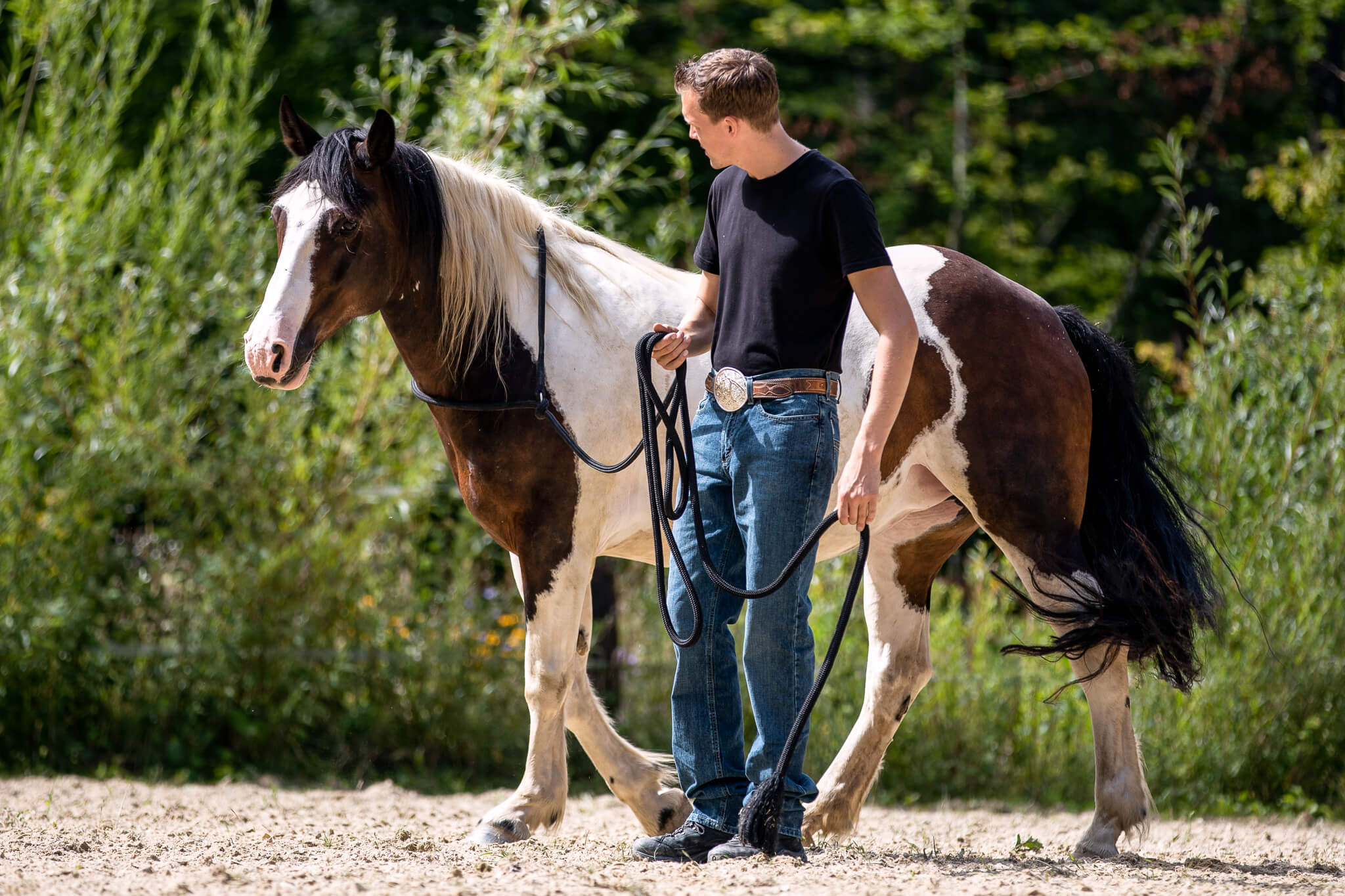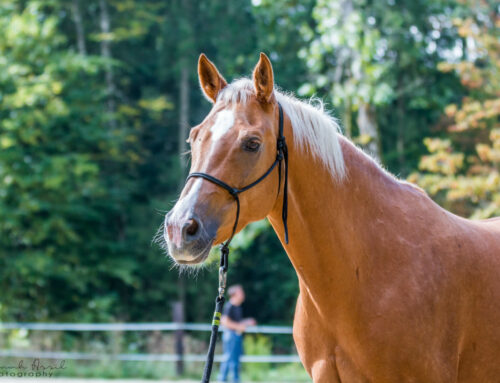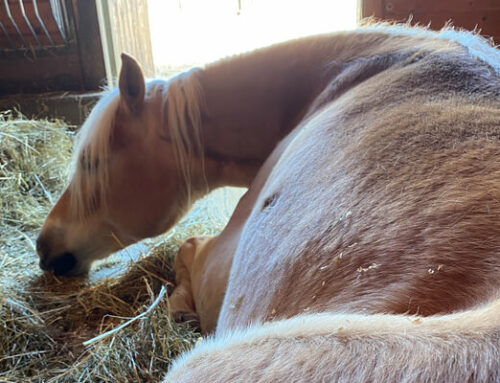Communication with horses happens in the moment. Whether the human being is in the here and now with his thoughts and feelings plays a decisive role. But what are the reasons for that? What exactly happens when we are not present? What possibilities are there to better engage in the moment? And is it possible to overdo it with presence?
Different tendencies between horses and humans
Humans have the wonderful ability to think about both the past and the future. Thus, we are able to reminisce and plan our future. In doing so, it’s possible that we forget about the here and now. Sometimes we are not even able to engage in the moment at all.
For horses, on the other hand, the here and now is the center of attention. They live every moment with full intensity. Although previous experiences are used to classify events and things, their focus is on the moment.
I experience these different tendencies in horses and humans as the cause of many misunderstandings in the interaction between the two species.
What happens when we are not present
Horses rely on nonverbal communication. If we want to communicate with them, we must be aware of our own body language. If our thoughts are not in the here and now, we run the risk of sending signals that we are not aware of.
For example, if our thoughts revolve around something that annoys or stresses us, our body expresses that as well. Even if the cause of our negative thoughts is far away from the current situation, the horse perceives it at that moment.
In addition to sending signals, non-existent presence also affects our ability to receiving them too. Horses themselves send very subtle signals that need to be want to be perceived by us. If we are elsewhere in our thoughts, we will miss subtle approaches from the horse.
Also, our timing suffers if we are not present. It’s because even if we were to control our body expression and keep an eye on that of the horse, our reaction time will increase if we are not on task. However, to successfully train a horse, we need to react accurately to its behavior and signals.
After work to the horse
Horses are often seen as a relaxation factor. Thus, after a stressful day at work, visiting the horse is eagerly awaited by many. Arriving at the stable, our mind is still occupied with the things that happened to us today; annoyed us or stressed us. Or maybe we are already thinking about tomorrow’s workday: what is coming up, what we could not finish today and has to be done tomorrow.
Training your horse in such a condition is not always the best decision. After all, horse training requires presence as well as patience and empathy – things that are lacking when we are in a weak state of mind. Unfortunately, this can be seen daily in many riding arenas around the world starting late afternoon …
Simply spending time with the horse instead of trying to train it is one possible solution. So, a couple of years ago, I started forming a habit of taking the horse for a walk or letting it graze when I am in the described state. I do not require or expect the horse to do anything. I try to feel the horse and let my mind come to a rest.
Instead of projecting my state of mind onto the horse, I try to transfer its onto me. Only after I have succeeded in feeling the connection to the horse and thereby to myself again, do I take training into consideration. Sometimes I then start a training session, sometimes I don’t. By applying this strategy, I have saved a lot of frustration for my horse and myself.
Finding the right balance
I regularly meet people who take the issue of presence too seriously. They feel they must meditate while visiting their horse. Every undesirable behavior of the horse is referred to themselves. They demand themselves to get centered first, before interacting with the horse.
For me, in these cases, the right balance has been lost. In order to be a good horsewoman or horseman, we don’t have to be perfect. A little bit of inattention, a little bit of mind wandering, a little bit of being human, is bearable for the horse in my eyes. The basics in training should work even if we are not in a perfectly balanced, mental state!
However, if we strive for a long-term, harmonious cooperation, we have to put the past and the future aside as much as possible and immerse ourselves in the moment. The more subtle we want to become, the more important this gets. If we want to reach for the stars and experience very special moments with our horses, our presence becomes inevitable.
A simple exercise to get into the moment
Differentiating the movements of the horse’s legs under saddle is a simple way to get into the here and now. While riding, concentrate on one horse leg at a time and try to sense when exactly it is rising or falling. If you comment out loud (“Now, the right hind leg is going up, now, now, now, …”) a helper on the ground can check your indications and give feedback.
This exercise basically trains our riding skills (excellent riders know exactly where which leg is). However, I have found that it can be a great help to people in directing their thoughts and feelings to the moment. Physical sensing (How does the movement feel?) provides a door into the here and now. If we use it, we are one step closer to a harmonious togetherness.
Florian Oberparleiter
January 2023



